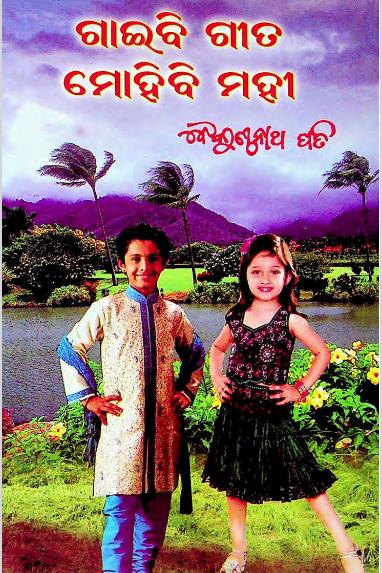In the realm of Odia literature, few works encapsulate the essence of childhood as beautifully as Baikunthanath Pati’s poem Gaibi Gita Mohibi Mahi, published in 2012. This poem stands out not just for its lyrical beauty but also for its profound reflections on the innocence and dreams of children, making it a timeless piece for both young and adult readers alike.
Pati’s poem delicately weaves imagery and emotions, drawing readers into the vibrant world of childhood. The title itself, Gaibi Gita Mohibi Mahi, translates approximately to The Hidden Songs of Delight,suggesting a celebration of the secret joys and untrammeled dreams that characterize the early years of life. It is through this lens that we explore how children view the world, rich with wonder and imagination.
One of the standout features of Pati’s poetry is his use of vivid imagery. In Gaibi Gita Mohibi Mahi, the poet paints scenes that evoke the sights and sounds of a child’s playful existence. From the simplicity of flying kites to the laughter shared among friends, each image serves as a metaphor for freedom and creativity. These symbols are not merely decorative; they embody the very spirit of what it means to be a child—curious, carefree, and full of dreams.
Pati’s use of natural elements—such as the sky, rivers, and flowers—further amplifies the connection between childhood and nature. This harmonious relationship underscores the idea that children possess an innate ability to find joy and solace amidst the beauty of the world around them. It reminds readers that the wonders of nature are closely intertwined with the formation of childhood memories, making them invaluable to personal growth.
A prominent theme in Pati’s poem is the innocence of childhood. The poem gives voice to the unfiltered joy and pure emotions that children experience. It invites readers to reflect on their own childhood experiences, perhaps evoking nostalgia for a time when life was simpler and filled with magic. The poet’s ability to capture this essence lies in his respectful acknowledgment of childhood’s purity—in contrast to the complexities of adult life.
Additionally, the theme of imagination runs deep throughout the work. Pati emphasizes how children dream without boundaries, creating worlds that defy logic and limitation. This aspect of childhood is crucial; it fosters creativity, innovation, and resilience in later life. By celebrating the imaginative spirit of children, Pati encourages readers to appreciate the importance of nurturing these qualities in future generations.
Books Info
| Books name | Gaibi Gita Mohibi Mahi / ଗାଇବି ଗୀତ ମୋହିବି ମୋହୀ |
| Author | Baikunthanath Pati |
| No Of pages | 50 |
| Publisher | Rashtriya Sahitya Sanshtana |
| Publication | 2012 |
| Printed At | Compueprint |
| Distributor | NA |

